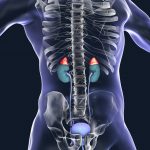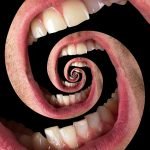The Search for the Truth: Homeopathy has Many Similarities to Detective Work
Joe Kellerstein, DC, ND
I am fortunate today in having a preceptor. I don’t know that she feels the same way. It seems difficult to control my enthusiasm for homeopathy, and the verbal runoff can be considerable when a captive audience is present.
Yes, I should get a life, but … wait a minute … no, I have one. This stuff is amazing! No two situations are alike. Every symptom elicited is a challenge. The excitement is first in the chase for characterizing symptoms, then in the search for an artistic match to the portrait of disease in the Materia Medica. It culminates with participation in the wave of curative process. (OK, I just re-read that; I am sick.)
Case Report
Olga was seen recently presenting with a chief complaint of mild but persistent depression of some five years’ duration. Sulphur 10m was given, and she reported feeling much relief in that department within two or three days; about one week later brought a return of old back pain but with tremendous severity. The pain was so distressing that it brought on tears and made it quite impossible to be away from bed for long, so our conversation was on the phone:
Dr. K: “Tell me all about this problem.”
Patient: “The pain is on the right side of my low back. I also feel it on the outside of the right thigh and in my right big toe. I can’t make a move to get out of a chair without it really hurting.”
Here we have a fairly spontaneous assertion. This is the aggravation uppermost in the patient’s mind from her experience, so this is where I begin. I will not accept anything without challenge, but not now … later, after the spontaneous narrative is exhausted. For the present, I will use the rubrics back pain worse rising from a chair – same for lumbar pain and for sciatica.
Dr. K: “What more can you say about the back pain?”
Patient: “Mornings are just awful. I dread getting out of bed.”
There is a pause. I feel I need clarification. “So that first move to get out of bed is a real problem?”
Patient: “No, that is not so bad. It is after I’m up and about. Around the time I brush [my teeth] I can really feel it. I wonder how to make it through the rest of the day.”
So the symptom, after we dust it off a bit, is really aggravation after rising in the morning.
The flow of information seems to be dry.
Dr. K: “Take me on a tour of the rest of the day and night with this suffering.”
Patient: “Well, after brushing [my teeth] I help it a bit by bending backward, stretching backward.”
Dr. K: “That makes a big difference?”
Patient: “No, it helps a bit. Mostly, I just feel like it will help, so I do it and it gives me a bit more mobility.”
I will avoid emphasizing bending backward ameliorates. There is a rubric, I think in the generals, about desire to stretch. I will double back on this idea later and see if I can verify or deny in other ways. Wait a minute; I have an idea.
Dr. K: “How is sleep with this problem?”
Patient: “It’s fine. There is no disturbance with this.”
Dr. K: “So all positions are equally good?”
Patient: “No, I like being on my belly. It gives comfort and feels great on my back.”
Lying on the abdomen ameliorating is somewhat unusual for a sciatica. The natural desire to be in this position for comfort adds emphasis to it and possibly adds emphasis to the modality of bending backward ameliorates. I will add both to my repertorization.
Now the river of narrative and general and even probative questioning has been exhausted. I have no more information regarding this syndrome. How can I get more characterizing information? Maybe if I check for any changes in the general symptoms. First the thermal profile.
Dr. K: “So you’re still very warm, especially in bed at night?”
Patient: “Yes.”
Dr. K: “All parts of you are equally warm?”
Patient: “Yes. I am very warm … except of course for my legs.”
Dr. K: “Tell me about this; you have different thermostats going on?”
Patient: “My legs are cool. The rest is hot.”
Dr. K: “Your feet are normal temperature, not hot or cold?”
Patient: “That’s right.”
Dr. K: “So you don’t wear socks at night in bed?”
Patient: “Well, actually I wear socks always. If not, my feet feel icy cold. I could not sleep without socks.”
I am beginning to feel like Columbo here. We now have the symptom icy coldness of the feet.
Patient: “I don’t know if this is important (which often signals a key point), but my legs, they feel as if somehow twisted. Not on straight.”
Wow, another nugget.
Commentary
So far, the situation looks a bit like the graph above when translated into our technology for purposes of comparison with the Materia Medica. What are the most peculiar? I tend to think the bending backward and the twisted sensation. The remedies with both these traits are Dioscorea, Sepia and Zinc, and if we do an extended search, Hypericum as well.
It is at this point that I might tell you what I did and finish the story … but in this case, the story is not finished. I only prescribed a week prior to writing this column. The story itself, however, was so exemplary of the process of everyday practice and the detective work necessary that I wanted to have you join me in the chase.
You know of course that the disease may not yet have expressed in its fullness, or the patient (or physician) may have omitted needed information. Each visit – until definite curative action is aroused – is a fresh search.
Patient Update
In the May issue of NDNR I had written about a situation that struck me. The patient suffered with multiple-level spinal degenerative changes and a resulting chronic pain syndrome. Surgery had been recommended, as drug therapy failed to provide help. As you might recall, she had a history of severe grief following the sudden death of her husband some years prior.
Ignatia had quickly resolved the pain and mobility issues. What so astounded me was the very physical nature of the neuropathic and joint pain so dramatically relieved by a remedy known for its effect on the psyche. I so enjoy being a perpetual tourist in this world of healing. I remind myself that my role is to press the right button and watch the show.
There is now an addition to the story that provides some insight into the continuing nature of chronic case management in homeopathy.
Our patient had a history of surgery on the left knee in 1978. The surgery was quite helpful, and any residual discomfort was helped by regular visits to a chiropractor.
Typically the knee would go out about twice a month. On rolling over in bed at night, it would suddenly happen with severe pain – 9.5 out of 10. When suddenly straightened out with a pop, the knee would go back in and resolve. One day in early April, her knee would not go back in.
The 9.5 level of pain became a 10. Her knee swelled immensely, which was soon followed by visits to the emergency room and consultation with an orthopedic surgeon. The verdict after films and an MRI was a bone-on-bone situation in the knee. The medial femoral condyle had large cartilage defect areas described as potholes, and the patella showed definite signs of chondromalacia. Steroid injection did not prove helpful, so the advice defaulted to a knee replacement.
The patient absolutely refused and was told to come back anytime she was ready. I received a call from her shortly thereafter. Upon listening closely to her voice on describing the pain, it seemed as if emphasis was especially on the fear of going down the steps (17) outside of her house. Almost as bad was the prospect of going down on the knee while cleaning. I used the following repertorization to study the case:
- Lameness in left knee
- Weakness of knee as if sprained, gives way under her, has to straighten it before walking
- Swelling of knees
Calc 30 TID was prescribed.
At the first follow-up, the patient reported: “By the second dose I could feel something happening. The pain has gone from a 10 to a 2, mostly stiffness especially felt at the back of the knee and coming around. Swelling is now minimal, and it seems easy for me to negotiate those stairs. It was a bit worse yesterday but has recovered. I cleaned house from 8 a.m. to noon, and it got a bit tired.”
What can we learn here?
- We can provide at least effective palliation even in surgical cases of degenerate joint disease where there is sufficient characterization of a remedy.
- In the course of treatment of chronic ailments, we can expect that multiple remedies may be needed.
- The totality of symptoms is the only guide to the remedy.
 Joe Kellerstein, DC, ND graduated as a chiropractor in 1980 and as an ND in 1984. He graduated with a specialty in homeopathy from the Canadian Academy for Homeopathy, and subsequently lectured there for two years. He also lectured in homeopathy for several years at CCNM; for eight years at the Toronto School of Homeopathic Medicine; and for two years at the British Institute for Homeopathy. Kellerstein’s mission is the exploration of natural medicine in a holistic context, especially homeopathy and facilitating the experience of healing in clients.
Joe Kellerstein, DC, ND graduated as a chiropractor in 1980 and as an ND in 1984. He graduated with a specialty in homeopathy from the Canadian Academy for Homeopathy, and subsequently lectured there for two years. He also lectured in homeopathy for several years at CCNM; for eight years at the Toronto School of Homeopathic Medicine; and for two years at the British Institute for Homeopathy. Kellerstein’s mission is the exploration of natural medicine in a holistic context, especially homeopathy and facilitating the experience of healing in clients.










